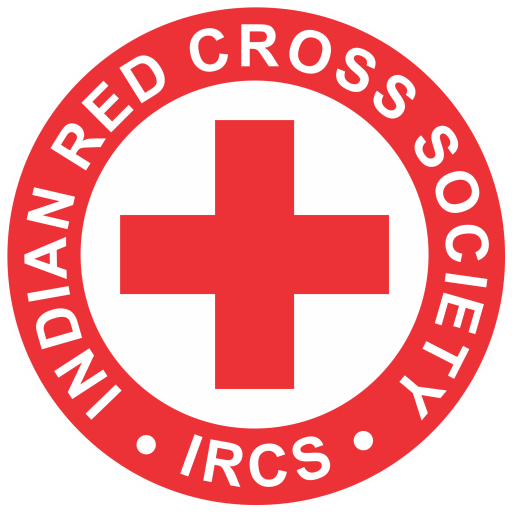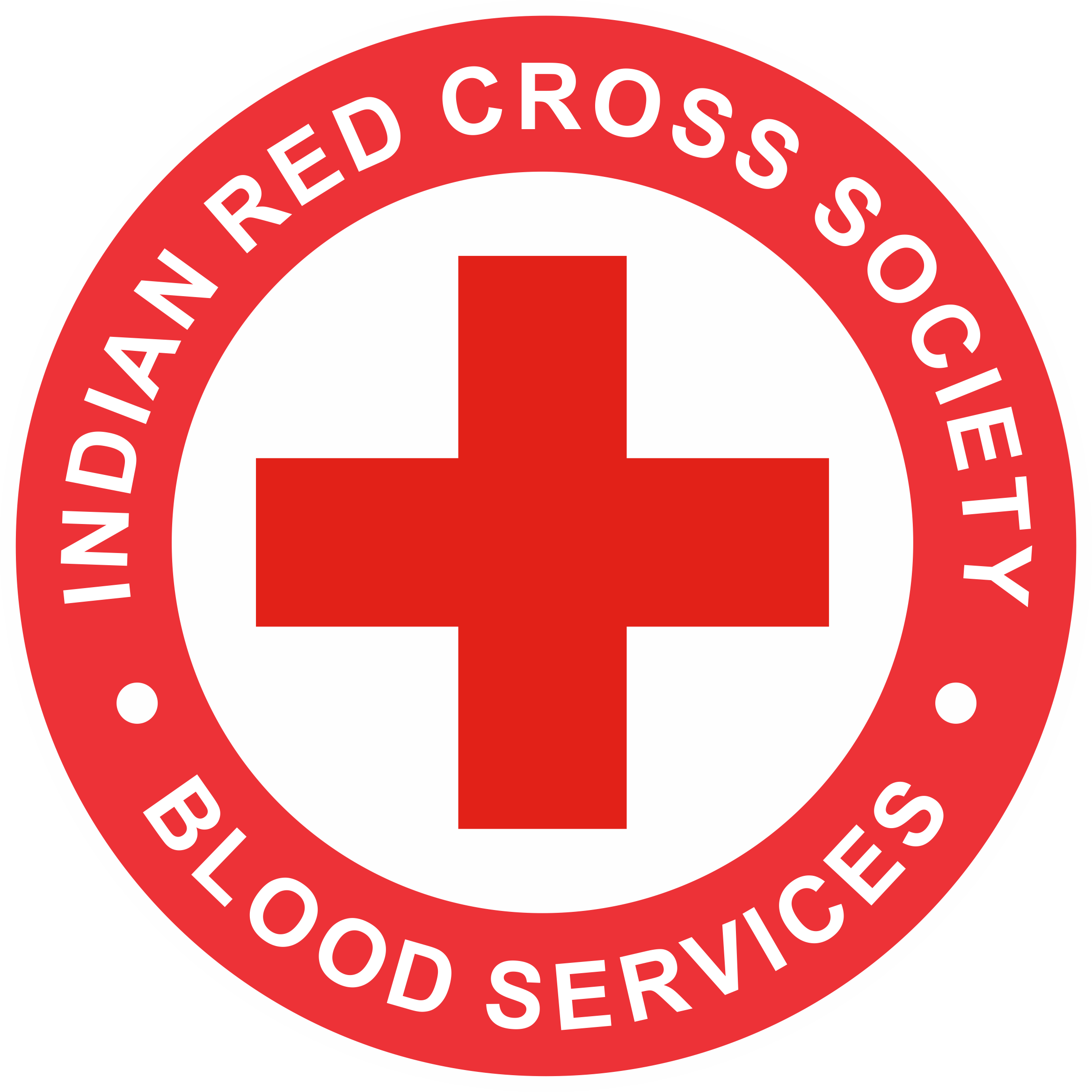For technician on duty at IRCS
Blood Centre, NHQ
011-23711551,
011-23359338
- IRCS
- Our Programs and Activities
Our Programs and Activities
Our Programs and Activities
The Indian Red Cross's programmes are grouped into four main core areas:
Promoting humanitarian principles and values
Disaster
response
Disaster preparednes
Health and Care in the Community
🤝Promoting Humanitarian Principles and Values
Red Cross promotes the Humanitarian values, encouraging respect and cooperation to solve problems globally. Our goal is to influence people’s behaviour through the seven fundamental principles.
🌍 Disaster Response
Disaster response is a key focus, assisting millions of people annually, from refugees to disaster victims. Our aim is to provide quick and effective relief in times of crisis.
❤️🩹 Disaster Preparedness
In response to the increasing frequency of natural disasters, we focus on preparedness programs that help communities minimize risks and cope with disasters when they strike.
🕊️ Health and Care in the Community
We strive to ensure access to basic health services and education, addressing health disparities and promoting better living conditions for vulnerable communities.
Guiding and supporting the development of its Societies is one of the Red Cross’s fundamental tasks and runs through these four core areas and others. Capacity building programmes and activities include : management and volunteer training, improving branch structures, planning, fund-raising and gender equality. creating the opportunity for Red Cross Societies to network.
Other Major activities includes : hospital services, blood bank, HIV/AIDS programmes, home for disabled servicemen ,vocational training centers, tracing activities, maternity , child and family welfare, nursing, junior red cross activities, preparedness and prevention of communicable & infectious diseases, relief operations in fire, railway & other accidents and events .
Promoting Fundamental Principles and Humanitarian Values
The International Committees of the Red Cross and National Societies have a consistent and inspirational approach to promoting humanitarian values and the seven Fundamental Principles of the Red Cross and Red Crescent movement.
The aim is to influence the behaviour of the people we work with, through a better understanding of Fundamental Principles and humanitarian values. The three main target groups are:
- 🤝 Those working within Red Cross and Red Crescent societies
- 📈 Public and private authorities
- 👥 Members of the communities where we work
Other activities
The Indian Red Cross is a pioneer in the field of blood services and one of the largest voluntary blood banks in India since 1962. IRCS regularly conducts motivational campaigns to organize Voluntary Blood Donation Camps. It has more than 100 blood banks all over the country under different states and district branches.
The IRCS is very active in the prevention Of HIV / AIDS. It trains youth to disseminate information about the prevention of HIV / AIDS through Youth Peer Education Programme. It also has programmes and projects for children of HIV positive mothers, to provided comprehensive care.
IRCS provides service for sick and wounded men of the defence forces. Trained IRCS Lady Welfare Officers run welfare services for these people in military Hospitals. The officers run and maintain amenity stores and libraries as well as diversionary therapy programmes such as teaching handicrafts to convalescing patients encouraging ailing soldiers to participate in recreational activities and to give Psychological support for their disability and sickness.
IRCS runs home in Bangalore for servicemen since 1946. The centre is provided with an operation theatre, Physiotherapy Department, recreation room, Library and diversionary therapy all free of cost.
The Indian Red Cross Society (with Federation support) initiated a nation-wide Community Based Disaster Preparedness (CBDP) training programme in 1999 after a series of awareness raising workshops between 1996 and 1998. In 2000, the National Society convened a national strategic planning workshop attended by 19 State Branches from which a strategic plan for DP/DR ( 2004-2007 ) was formulated and its activities are still continuing. The vision of the programme is institutional strengthening, training and knowledge sharing through the establishment of a Disaster Management structure, programmes for strengthening and expanding community based disaster preparedness (CBDP) in disaster affected areas.
The IRCS provides opportunities to increase vocational skills and the earning opportunities of low-income groups and to raise the status of women socially and economically by making them available opportunities for learning and leadership. The VTCs were started in areas which are dominated by backward classes and tribal population. IRCS in respect for gender equality and to augment the participation of women in economic development process started 2 vocational Training Centres, one each at Salt Lake , Calcutta ( West Bengal ) and at Arakkonam (Tamil Nadu) in the years 1989 and 1993. These centres besides providing training to the needy women also have developed as nucleus points for promoting Women/ child development activities. These centres also serve as garment production centres for use by the society in its relief operations it helps in supplementing family income, enabling mothers to spend more liberally on the welfare and upbringing of their children, give economic independence and improve the status of women in the community, enhance their decision-making role and Improve the quality of life for the family and the communities in which they live.
IRCS helps people trace or send massage to missing loved who have been separated ones through forced, unseen and inevitable circumstances when all other means of locating them have not yielded results. It also reunites families who have been separated under similar circumstances.
Maternity and Child Welfare schemes of National Headquarters were started in 1954 to extend Maternal and Child Development activities for the Weaker Section of the Community. The welfare activities are being continued through various Hospitals, Sub Centres and Bal Vikas Kendras.
These are run by different states and district branches. All Red Cross MCW hospitals and centers, as well as family welfare clinics, carry out family welfare work. They motivate eligible couples to adopt small family norms and provide them with contraceptives and other family planning devices. Many of these centers are equipped to meet motivational and clinical arrangements
The Red Cross MCW units teach home nursing skills to auxiliary nurses, midwives and housewives.
The Main Priorities are
New initiatives are being taken to ensure that Red Cross Red Crescent volunteers and staff understand and act on the basis of the Fundamental Principles in their work with vulnerable people in times of peace, disaster or armed conflict. Training includes : the legal and ideological basis of the Red Cross Red Crescent, decision-making processes, mandates, as well as communications and relations with others.
The values that the Movement has formally stated to be of importance for promotion are :
the protection of life, health and human dignity
respect for the human being
non-discrimination on the basis of nationality, race, gender, religious beliefs, disability, class or political opinions
mutual understanding, friendship, cooperation and lasting peace among people
service by volunteers
The Indian sub continent is highly prone to droughts, floods and other natural calamities. Among the states as many as 22 states are said to be multi-disaster-prone regions.
Among all the disasters that occur in India , floods are the most devastating. Over 40 million hectare of land has been identified as flood prone. An average of 18.6 million hectare of land is flooded annually. The Ganga-Brahmaputra-Meghna basin, which carry 60 % of the nation’s total river flow causes floods.
Another killer is the earthquake -the most dangerous and disastrous.About 57% of the total area in India is vulnerable to seismic activity of varying intensities. Generally areas located in the Himalayan and sub Himalayan region and Andaman and Nicobar islands are vulnerable to earthquakes.
Drought is an eternal feature of Indian livelihood. 18% of the country’s total area is drought prone. Approximately half of the Indian population is affected by drought annually. 68% of the total cultivated area is estimated to be drought prone.
India has the gift of having long coastline, running to about 8040 km. This is exposed to tropical cyclones in the Bay of Bengal and Arabian Sea in the ratio of 4:1. The Indian Ocean is one among the six key cyclone-prone regions of the world. The coromandel coastal line is more prone – about 80% of the total cyclones generated in the region hit here.
Indian Red Cross with the assistance of the Federation and other National Societies reach humanitarian services to the victims of calamities.
Poverty and war. Flooding and drought. Earthquakes and environmental disasters. Billion people were affected by disasters in the past. The impact is high; leaving people traumatised by the death of family and friends, their lives devastated by the loss of homes, possessions and stocks of food.
Disasters are becoming more complex, with increasingly long-term consequences as they strike countries with economic problems or political instability, and weaken already fragile public services such as health, water and sanitation. Recurrent crises, such as floods year after year, give people and their crops no time to recover.
Disasters disproportionately affect the poor: over 90 per cent of the total of disaster-related deaths occur in developing countries, where the economic losses they cause hit far harder than in industrialised nations and can wipe out years of economic development.
As a result, the impact of disasters has increased dramatically in the last few decades in terms of the number of people affected and the length of time they are affected for. This trend is expected to keep rising in coming years.
Bringing emergency relief to refugees and victims of poverty and disasters has been a key activity of the Red Cross and its member Red Cross and Red Crescent Societies for the last several years.
The emergency phase of a relief operation aims to provide life-saving assistance; shelter, water, food and basic health care are the immediate needs; along with a sense of humanity and a sign that someone cares. Subsequent needs include reconstruction and rehabilitation. These needs can continue for several years, particularly in the case of refugees and victims of socio-economic collapse. IRCS approaches to disaster response on these lines and works to improve the quality of humanitarian assistance provided to beneficiaries. The Indian Red Cross Society has been equipping itself with its manpower and physical infrastructures for a nation-wide Disaster Preparedness/Disaster Response (DP/DR) programme. .The urgent and serious need for substantial disaster preparedness measures in India had been recommended by a number of agencies (including DFID and the UK Disasters Emergency Committee) after major disaster response operations for the 1998 Super Cyclone in Orissa, the 2000 floods in Assam and the massive earthquake in Gujarat in 2001,Tsunami in 2004,Floods and earthquake in 2005.It is proved that the amount spent in prevention pays richly and saves a lot in relief.
The Indian Red Cross Society (with Federation support) initiated a nation-wide Community Based Disaster Preparedness (CBDP) training programme in 1999 after a series of awareness raising workshops between 1996 and 1998. In 2000, the National Society convened a national strategic planning workshop attended by 19 State Branches from which a strategic plan for DP/DR ( 2004-2007 ) was formulated and its activities are still continuing.
The vision of the programme is institutional strengthening, training and knowledge sharing through the establishment of a Disaster Management structure, programmes for strengthening and expanding community based disaster preparedness (CBDP) in disaster affected areas.
CONNECT& CONTRIBUTE
MORE FROM IRCS NHQ
FACILITIES & HIGHLIGHTS
IRCS STATE BRANCHES
IRCS NHQ ADDRESS
Indian Red Cross Society 1,
Red Cross Road
INDIA
New Delhi - 110001
MORE FROM IRCS....
IRCS STATE BRANCHES
IRCS NHQ ADDRESS
Indian Red Cross Society 1,
Red Cross Road
INDIA
New Delhi - 110001
-
For technician on duty at IRCS
Blood Centre, NHQ
011-23711551, 23359338
© Copyright 2025 by Indian Red Cross Society


